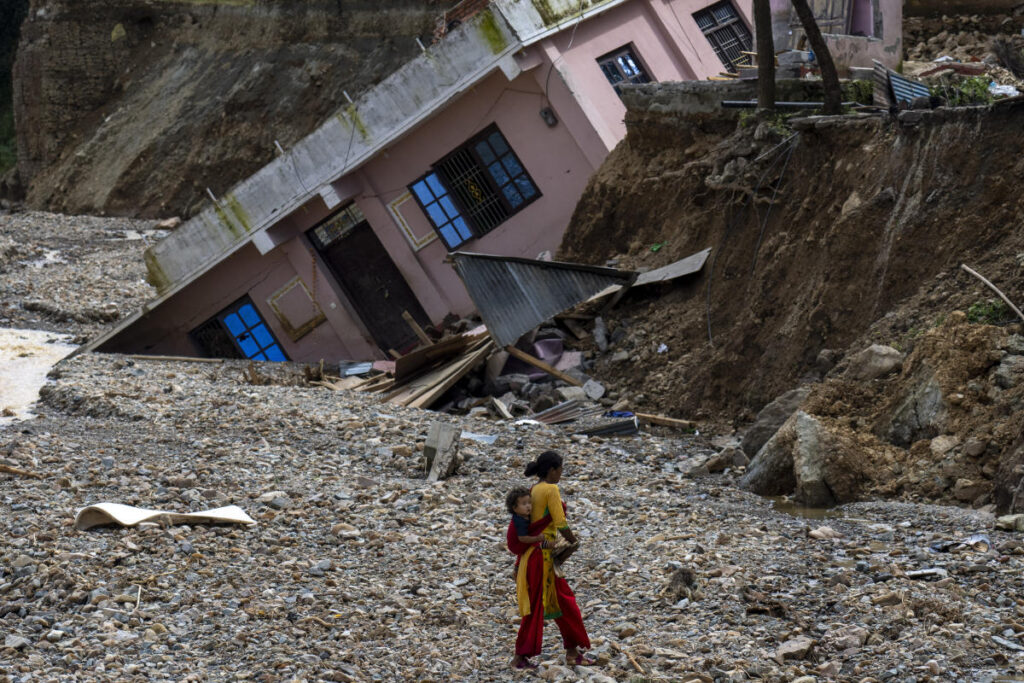KATHMANDU, Nepal (AP) — Bishworaj Khadka, a cook in Lalitpur, heard the Nakhu River growing louder and louder as he sat with his wife and daughter-in-law in their house on the river’s edge. It had not stopped raining for twelve hours and the swollen river was getting dangerously close.
When they felt the first reverberation through the living room floor, the family rushed out the door. The rest is a blur in Bishowraj’s mind. He could only have stuffed some money into his pocket. Barely fifteen minutes later the house collapsed before their eyes.
Bishowraj took his family to his brother’s house, further from the riverbank.
It was the morning of Saturday, September 28, and the rain would continue for another day, causing landslides and flooding in the areas around Kathmandu, the capital of Nepal. More than 200 people died in the worst floods to hit the region in fifty years. In the Kathmandu Valley, more than 25 centimeters of rainfall fell in two days, almost 20% of the monthly average.
Kathmandu’s Bagmati River flooded low-lying areas, damaging temporary shelters and forcing daily wage squatters to seek safety away from the raging waters. Some townhomes were deeply covered in mud and debris from broken tree limbs and damaged buildings.
On Monday the sun shone and Bishowraj and his wife Sharmila returned to what was left of their home to try to save what they could. The damage was extensive and Sharmila did her best to find cooking utensils that were still intact.
Elsewhere in the capital, earthmovers have lifted parked vehicles out of the mud and tried to clear the ground floor of the slime left behind by the receding water. Several highways leading to Kathmandu were damaged, causing traffic jams and disrupting supplies.

